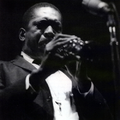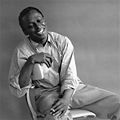

Sam Newsome is a saxophonist and a professor of jazz studies. He recently wrote a fascinating article about innovators in jazz.

Charlie Parker was a precocious conceptual prodigy, a young genius who made a discovery at age 19 that became the basis for the radical new bebop language he developed in the next few years. Newsome notes that Parker found his own voice immediately:
Parker often cites Lester Young as an influence, however there are no recordings where he sounds like a Lester Young clone. As a matter of fact, when you hear him playing with Jay McShann at 19, he already sounds like Charlie Parker.

John Coltrane was a great experimental seeker. Coltrane was a late bloomer, famous for practice sessions spent obsessively trying to improve his music, never satisfied. Criticism of his constant repetition and trial-and-error variation never fazed him, because he knew he was always learning, and always had more to learn. In 1962, when he was already recognized as a leader in jazz, an interviewer asked him what he was looking for, and he answered that he didn't know:
Something that hasn't been played before. I don't know what it is. I know I'll have that feeling when I get it. I'll just keep searching.

In Newsome's analysis, Miles Davis was the Picasso of jazz -- the brilliant protean conceptual innovator who could definitively accomplish one goal, then go on to another, completely different: "Miles is the jazz musician whom I feel had the ability to make these kinds of sudden breakthroughs . . . Within a span of 20 years, he was at the forefront of five different movements in jazz."
As in other disciplines, Newsome concludes that the dramatic, sudden discoveries of conceptual innovators in jazz overshadow the gradual progress of the experimentalists: "conceptual innovators typically receive most of the ink in jazz history books."
Images of Sam Newsome, Charlie Parker (Gottlieb 06941), John Coltrane Live at Birdland, and Miles Davis by Palumbo were captured at Wikimedia Commons.
